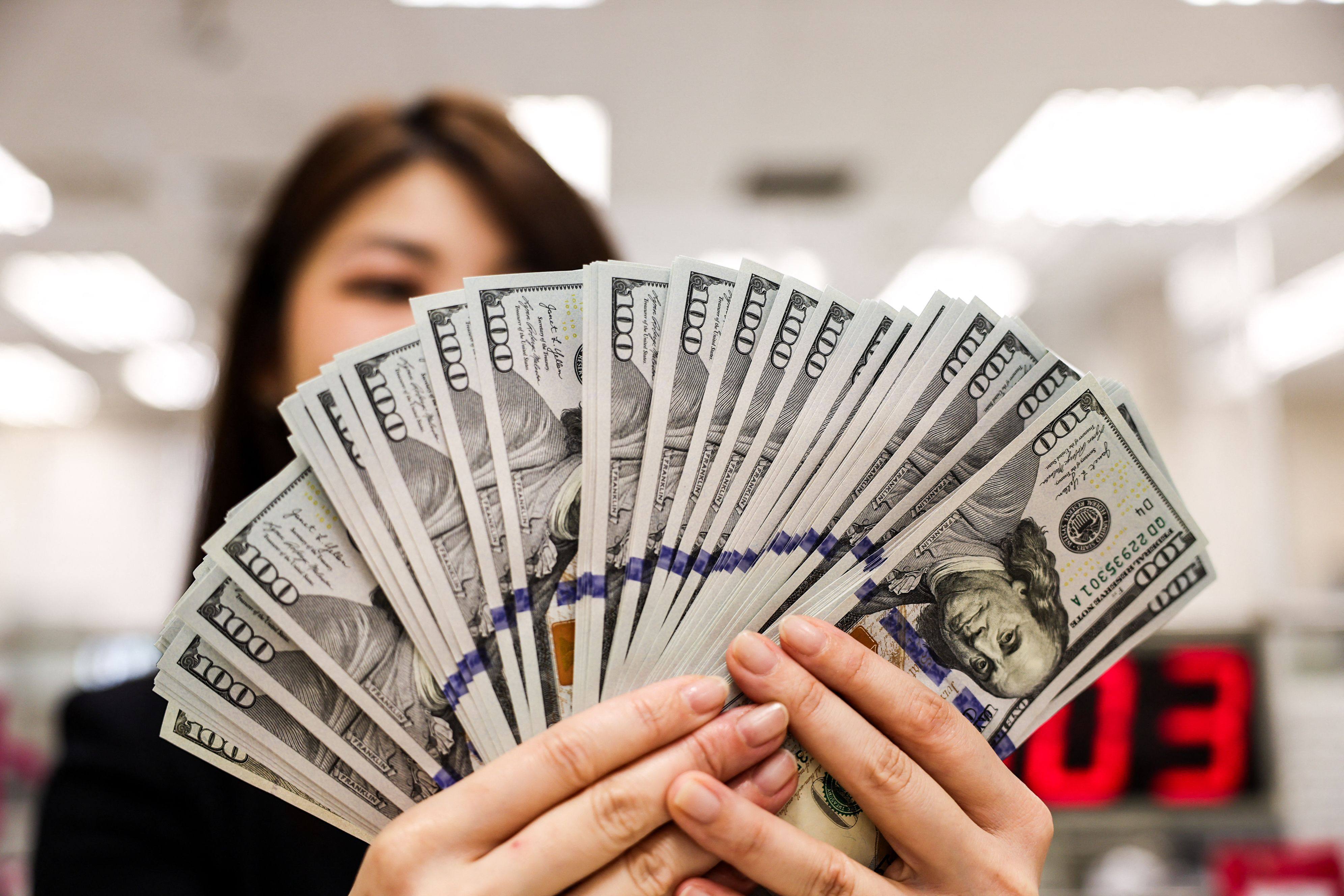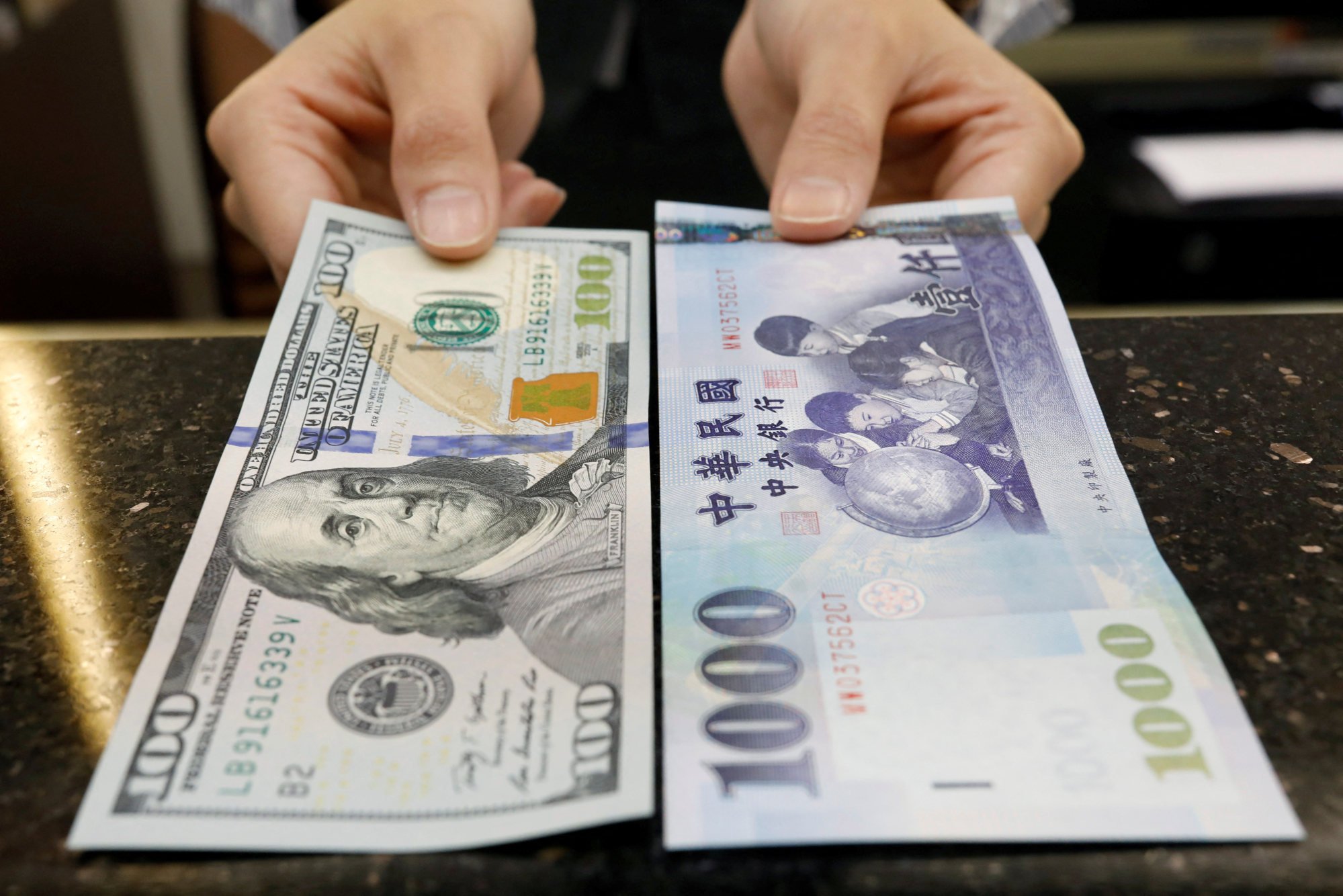There’s more to Taiwan’s currency shock than meets the eye
The surge in the New Taiwan dollar has exposed how trade policy, capital flows, geopolitics and sovereign risk have become closely intertwined

In early January, the Bloomberg Asia Dollar Index – a gauge of the performance of leading Asian currencies against the US dollar – stood at its lowest level since 2006. Clobbered by a sharp rally in the US dollar as investors expected US President Donald Trump’s higher trade tariffs to stoke inflationary pressures, keeping US interest rates higher for longer, Asian currencies were viewed as one of the most vulnerable assets.
The combination of Asia’s deep integration into global supply chains and Trump’s blinkered focus on bilateral trade balances put the region’s economies and markets in the firing line. As Morgan Stanley noted in a report on November 17, Asia accounts for seven of the 10 economies with the largest trade surpluses with the United States.
Fast forward four months and Asian currencies have defied expectations. Since its low on January 13, the Bloomberg Asia Dollar Index has risen 3.5 per cent, with most of the rally occurring since the end of April. The yuan has hit its highest level versus the US dollar in six months, the Hong Kong dollar is testing the upper end of its trading band and the Indonesian rupiah has erased most of this year’s losses against the US dollar after falling to a record low on April 8.
However, it is the New Taiwan dollar, a stable currency that rarely makes the headlines, that is leading the gains in Asia’s foreign exchange markets. On May 2, the Taiwanese currency surged 4 per cent against the US dollar, its sharpest daily advance since 1988. Since April 3, the New Taiwan dollar has risen a staggering 9 per cent.
The much stronger appreciation in the currency since the start of this month was attributed in part to hopes for a de-escalation in the US-China trade war, with Washington and Beijing set to begin talks on May 10. Speculation that Taiwan will allow its currency to strengthen to reach a trade agreement with the Trump administration was also a factor, according to some analysts.
Yet these explanations are not convincing. A more compelling reason for the surge in Taiwan’s currency is the sudden unwinding of risky bets by Taiwanese life insurance companies, one of the biggest and most overlooked forces in global debt markets.

With Taiwan’s current account surplus ballooning to nearly 15 per cent of economic output, the “lifers” have acted as a release valve, helping absorb massive inflows of foreign currency by recycling some of the money into foreign assets, mainly US bonds. While Taiwan’s central bank used to account for the overwhelming bulk of the holdings of foreign securities, insurers alone now hold more than 40 per cent of Taiwan’s overseas assets.
However, the dramatic widening in the interest rate gap between Taiwan and the US increased the cost of hedging foreign currency exposure. According to Societe Generale, insurers’ hedging ratio dropped from 75 per cent in 2016 to 65 per cent last year. When the US dollar fell sharply because of Trump’s reckless policies, insurers’ inadequate hedging came home to roost, exposing a huge mismatch between their US dollar assets and their Taiwanese dollar liabilities.
The unhedged foreign currency risk exposure brought steep losses for the life insurance sector, causing a surge in hedging activity that drove up the value of the New Taiwan dollar. The currency shock has not only exacerbated vulnerabilities in the global financial system, it has also shown how trade policy, capital flows, geopolitics and sovereign risk have become closely intertwined, resulting in unexpected and unintended outcomes.
First, investors betting on sharp falls in Asian currencies versus the US dollar amid the onslaught of protectionism missed the wood for the trees. While trade-dependent Asia is most at risk, some of the countries that are most reliant on trade have huge current account surpluses, part of which were recycled into overseas assets, mostly US debt.
George Saravelos at Deutsche Bank said the “Taiwan effect” is a “warning shot. Self-fulfilling moves could happen to other currencies where the institutional investor industry is left with a large overhang of unhedged [US dollar] asset positions. The [Japanese yen] immediately comes to mind.”
Second, currency markets, which are more influenced by politics and policy, have become even more volatile and unpredictable. It is not just Taiwan’s insurers that are in a pickle. Taiwan’s central bank has less scope to intervene to weaken the currency because of intense pressure from the Trump administration for Asian currency appreciation to help reduce the US trade deficit.
Some investors believe a stronger Taiwanese currency has a major bearing on the success of trade talks between Taipei and Washington, which ended on May 1, the day before the New Taiwan dollar strengthened sharply. “There is little in official rhetoric to indicate that FX policy is in active play as part of Asian trade talks with the US. Yet anecdotal conversations indicate a ‘there is no smoke without fire’ mindset among investors,” JPMorgan said.
Third, Taiwan’s currency shock was triggered by the steep fall in the US dollar. While this exposed poor risk management on the part of Taiwan’s insurers, it also showed the extent to which US political risk is tripping up some of the most powerful players in global markets.
Many Asian policymakers appear relieved they no longer have to worry about plunging currencies. But as Taiwan’s woes show, a sharp and disorderly appreciation can be just as troublesome.